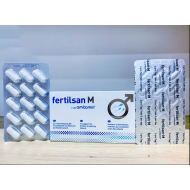
- Stock: In Stock
- Brand: Square Pharmaceuticals
- Product ID: Insulin Human (rDNA)
100% Secure Payment

This Item is for pre order
Indication: Type 1 and Type 2 Diabetes Mellitus.
Dosage & Administration
Thedosage form, the dosage and the administration time of the insulin aredifferent due to the individual differences of each patient. In addition, thedosage is also affected by food, working style and exercising intensity.Therefore, patients should use the insulin under doctor\'s instruction. Theaverage range of total daily insulin requirement for maintenance therapy intype 1 diabetic patients lies between 0.5 and 1.0 IU/kg. In pre-pubertalchildren it usually varies from 0.7 to 1.0 IU/kg, whereas in insulin resistantcases, e.g. during puberty or due to obesity, the daily insulin requirement maybe substantially higher. Initial dosages for type 2 diabetic patients are oftenlower, e.g. 0.3 to 0.6 IU/kg/day.
PHARMACOLOGY
Ansulin®is human insulin made by DNA recombinant technology so it has the samestructure and function asnatural insulin. The product can regulate the glucose metabolism and stimulatethe ingestion and utilizationof glucose by liver, muscles, and fat tissue. It can accelerate the transformation from glucose to glycogen storedin muscles and liver and inhibit the gluconeogenesis,thus, to lower the blood glucose. Normally, Ansulin® R takes effect within 30 minutes after injection, reaches its peak within1-3 hours and lasts about 4-8 hours. On the other hand, Ansulin® N comes into effect slowly afterinjection, reaches its peak within 6-9 hours & lasts about 24 hours. Ansulin® 30/70 & Ansulin®50/50 take effect within 30 minutes after injection, reach their peaks within 2-8 hours and lastabout 24 hours.
USAGE
1.Ansulin® should be injected subcutaneously 15 minutes to one hour before meal.The exact time foradministration is suggested by doctors with regard to each individual's case.
2.Prepare before use Firstly,clean your hands. Shake or rotate the vial gently to mix the solution uniformlyand check if the insulin hasthe normal appearance.
Ifusing a new Ansulin® bottle then flip off the plastic protective cap and wipethe rubber stopper with analcohol swab. Draw air intoyour syringe equal to the amount of insulin needed. Puncture the needle intothe vial and inject the air. Turn the bottle and syringe upside down.Withdraw correct dose of insulin into the syringe. Before pulling out the needle, check if thereare any bubbles remain in the syringe. Ifso, put the syringe upright and tap the syringe to discharge the air bubbles.
3.Injection Site Choose the areawhere skin is less tight, such as the upper arm, thigh, buttock and abdomen,etc. To avoid tissue damage,choose a site for each injection that is at least 1 cm from the previousinjection site.
4.Injection Method Cleanse theskin with alcohol where the injection is to be made. Put the needle in such aposition as to form 45° anglewith the skin. Puncture the needle into skin and inject insulin. Then pull the needle out and apply gentle pressure over theinjected site for several seconds. Do not rub the injection site.
DOSAGE
Thedosage form, the dosage and the administration time of the insulin aredifferent due to the individualdifferences of each patient. In addition, the dosage is also affected by food,working style and exercisingintensity. Therefore, patients should use the insulin under doctor'sinstruction. The average rangeof total daily insulin requirement for maintenance therapy in type 1 diabetic patients lies between 0.5 and 1.0 IU/kg. Inpre-pubertal children it usually varies from 0.7 to 1.0 IU/kg, whereas in insulin resistant cases, e.g.during puberty or due to obesity, the daily insulin requirement may be substantially higher. Initialdosages for type 2 diabetic patients are often lower, e.g. 0.3 to 0.6 IU/kg/day.
ADVERSEEFFECT
Hypoglycemiais the most common adverse effect during insulin treatment and symptoms of hypoglycemia may occur suddenly. Few cases ofthe allergic reaction such as red and swollen or itching are reported. It usually disappears in afew days. In some instances, the allergy may be caused by other reasons rather than insulin,such as disinfectant and poor injection technique.
CONTRAINDICATION
Hypoglycemiaor the patients who have allergic reaction to insulin or any of the excipients.
PRECAUTION
Inadequatedosing or discontinuation especially in type 1 diabetes, may lead tohyperglycemia. Hypoglycemiamay occur if the insulin dose is too high in relation to the insulinrequirement. Omission of ameal or unplanned, strenuous physical exercise may lead to hypoglycemia.
PREGNANCYAND LACTATION
Thereare no restrictions on treatment of diabetes with insulin during pregnancy, asinsulin does not pass theplacental barrier. Insulin treatment of the nursing mother presents no risk tothe baby.
DRUGINTERACTION
Whenusing oral contraceptive drug, adrenal cortical hormone, thyroid hormone, etc.,the drugs that can result inthe rise of blood glucose; you might need to increase the amount of Insulin.When using drugs withhypoglycemic activities, salicylate, sulfanilamide and other anti-depressants,which will result in the decrease of bloodglucose, the dosage of insulin should be reduced.
OVERDOSAGE
Excessiveuse of insulin may lead to hypoglycemia during the treatment. Slight tomoderate hypoglycemia maysuddenly occur. It is important to get immediate treatment when hypoglycemia occurs. If you have frequent hypoglycemia, youshould consult your doctor to discuss possible changes in therapy, diet plans, and/or exerciseprograms to help you avoid hypoglycemia.
STORAGE
Storeat 2°C - 8°C in a refrigerator. Do not freeze. In case of insulin for recentuse need not be refrigerated,try to keep it in a cool place and keep away from heat and light. The insulinin use can be kept under theroom temperature for a month.



























%20Pvt.%20Ltd./Movicol-Oral-Powder-190x190.jpg)
